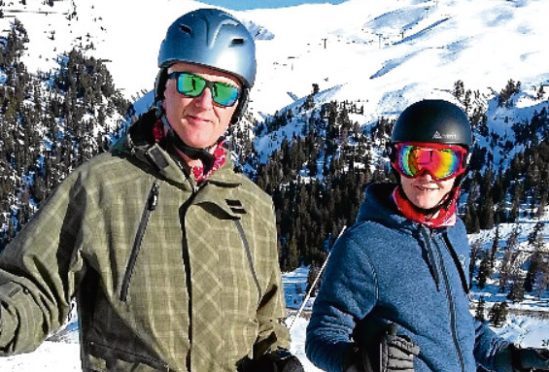Three weeks ago I wrote about the difficulties wildlife experiences during what is known as the hungry gap period. Frost and snow make foraging for food difficult, the hedgerow berries and wild seed heads in the ditches and the margins have been stripped and our wild birds need support.
I hope I practise what I preach. The niger seeds in the garden feeder disappear at an alarming rate and I know from their steady numbers that our resident goldfinches are holding their own. I also put out a mixed-seed feed, peanuts and fat balls.
Each morning an elderly spreading hawthorn tree overlooking our garden is alive with tits and sparrows waiting for me to dish up breakfast. They are messy eaters and plenty lands on the grass to be hoovered up by robins and blackbirds and starlings.
But what happens to our raptors in the hungry gap times? I suspect there is an assumption that because they are birds of prey, with hooked beaks and long talons, they have only to strike at a prey bird or small animal to be assured of a meal.
They are as susceptible – perhaps more so – to adverse weather as other species. They will quickly lose condition if they cannot feed when they need to. Opinions may differ but they probably only make a successful kill every third time they attempt one, losing energy each time they fail without having anything to replace it.
With the exception of red kites, which are hand fed at several sites – Argaty, near Doune in Perthshire and one near Castle Douglas, Galloway, are two that I’m aware of – raptors are left to their own devices during the hungry gap weeks.
Survival and soup
Driving south on the A90 with the Doyenne, just past Brechin , we saw a buzzard feeding, probably on a dead pheasant, at the edge of the fast lane with traffic racing past – something it would be unlikely to have done if food had been more readily available. It’s hard to think it survived such a hazardous experience but it was a good example of the gamble the bird had to take for survival.
We passed a field being ploughed when there was a break in the weather. Six grey herons, like so many humphybackit old men, were standing in the newly-turned earth, busily feeding. They have a varied diet which isn’t confined to fish and frogs but includes all the interesting insects and creepy crawlies thrown up by the plough.
As we passed a seventh glided in to join the party. They are normally solitary birds and it fascinates me how quickly the bush telegraph gets the news out when fresh pickings are available. The inner man needs nourished too and for lunch the Doyenne has been making sustaining soups to keep out the winter chills. She hates making sandwiches, which, of course, I could perfectly well make for myself. I would far rather have her soups – rib-stickers, my mother would have called them – which are a far healthier option, anyway.
And it’s a good time of year to enjoy our grandson Fergus’s honey from his two hives of bees. The hives sit at the edge of wild woodland and the nectar comes from alder, blackthorn, hazel, hawthorn, sycamore and also from the wild flowers at the wood margins. It’s light and runny and rather yummy!
Downhill tartan
The colourful, kilted skier in this week’s picture is son Robert with granddaughter Cecily, who is in France working for the season as a chalet girl. Rob, wife Katie and grandson Fergus joined Cecily for Christmas.
Rob is wearing his grandfather’s Macbeth tartan – my Orkney granny was a Miss Macbeath, if you can follow the family tree. There’s a story about the kilt. It was the last kilt Father had made by bespoke tailors Campbell’s of Beauly, who have clad the loins of the great and good of the Scottish Highlands since 1858.
I drove Father to Beauly for his fitting for the kilt. Mr Campbell appeared from the back shop to greet us. He was a rather stout man, as bald as a billiard ball, a consummate salesman of tartan, tactfully sweeping aside all of Father’s anxieties about numbers of pleats and how far down the knee kilts were being worn.
Meantime, Father had been looking round the shop and commented that something looked different. “Yes”, said Mr Campbell, “my grandfather came into the shop 104 years ago and we’ve just had it repainted.” The kilt is 56 years old now – two examples, surely, of proper Highland thrift.
Bell the dog?
As the bells rang out at midnight on Hogmanay, bidding the old year farewell and welcoming in the new, the Doyenne and I stood outside our front door in the light of a full moon and sealed our hopes for 2018 with ae fond kiss.
Across stubble fields a dog barked. From the other side of the wood another faintly responded. Were they howling at the moon…?


